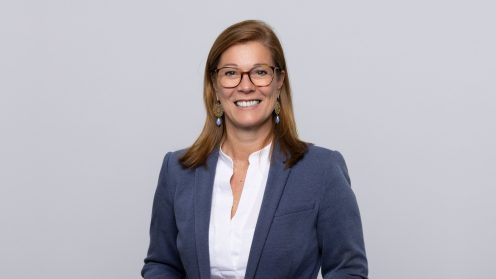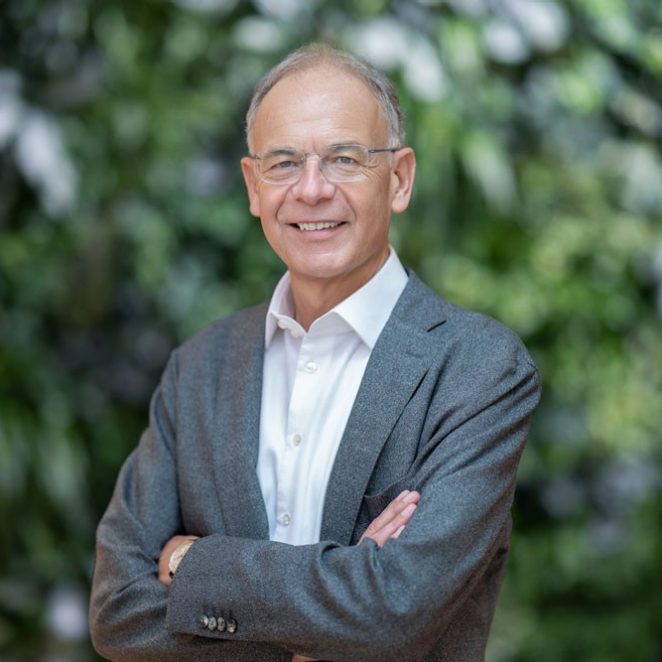 © Daniel Hinterramskogler / Wienerberger AG
© Daniel Hinterramskogler / Wienerberger AG
 © Daniel Hinterramskogler / Wienerberger AG
© Daniel Hinterramskogler / Wienerberger AG
f.l.t.r Helena Glantz, Tom McGlynn, Renske van der Stoep, Heimo Scheuch, Ingrid van der Heijden, Jens Linnet
- International experts in architecture discussed solutions for sustainable and affordable construction at Brick Award event
- Resource management, more attractive public spaces and shared infrastructure as key components for more sustainable and affordable construction
Vienna – Following the award ceremony of this year’s Brick Award, an international biannual prize for innovation and excellence in brick architecture created by wienerberger in 2004, a panel discussion between international pioneers in architecture took place. Under the motto “Building Tomorrow: Balancing Sustainability and Affordability in Architecture”, wienerberger CEO Heimo Scheuch sat down with Brick Award winner Tom McGlynn, nominee Renske van der Stoep, and jury member Ingrid van der Heijden, as well as Jens Linnet, speaker at the Brick Award symposium later that day.
Acknowledging that the ecological transformation is the defining challenge of our time, Heimo Scheuch pointed out: “In order to achieve a sustainable future for coming generations, we must reach the goals lined out in the European Green Deal, chief among them climate neutrality until 2050. Architects are in a unique position to support this transition. The construction sector accounts for over one third of all energy use and almost 40 percent of CO2 emissions. These emissions can be brought down by innovative construction methods, as pioneering architects around the globe continue to demonstrate. Because outstanding architects are, at their core, master problem-solvers.”
"These emissions can be brought down by innovative construction methods, as pioneering architects around the globe continue to demonstrate. Because outstanding architects are, at their core, master problem-solvers."
Re-use and better cities for sustainable housing
Jens Linnet, Brick Award symposium speaker and co-founder of the Danish design studio BOGL, added: “By being more aware of the entire production chain and the materials we choose for our projects, we can reduce costs and create more sustainable projects while still prioritizing quality and function.” He explained that in their construction projects, BOGL focuses on using pre-existing natural assets such as trees and on reusing or upcycling materials. Jens Linnet also emphasized that public spaces need to change in order to allow people to reduce the size and environmental footprint of their housing: “We need to be braver within city planning and mobility and create attractive cities so that we are willing to live in smaller homes.”
The positive impact of reusing buildings was also underscored by Ingrid van der Heijden, founding partner of CIVIC Architects in Amsterdam and part of this year’s Brick Award jury: “By prioritizing the reuse of buildings over demolition, materials and the embodied carbon they contain are kept in use for longer. It’s a sustainable and common strategy in both heritage and retrofitted buildings”, said Ingrid van der Heijden. She promoted an “approach that radically embraces the existing”.
Her compatriot Renske van der Stoep, nominee for this year’s award and founder of the Dutch studio Roffaa, added that in her experience, a key factor for implementing new concepts in construction is open communication with the people who will occupy the buildings. ”We are now increasingly working directly with the end users, where we establish a client association. This allows us to make much more targeted sustainable choices, the process becomes more compact, and the project more affordable.” This point was also taken up by Tom McGlynn of this year’s winning studio Níall McLaughlin Architects from the United Kingdom, who said: “Architects must learn to listen before talking. We can learn from locals to better understand what is needed for a particular place, culture, climate and community, both in design and construction terms."
Affordable construction through material management and shared infrastructure
Apart from sustainability, the discussion also moved towards the challenge of creating affordable spaces, which has only gotten more urgent as the cost of living increased around the world during the last two years. “In general, I see this as a crucial task for today’s architects. The demand for affordable housing is increasing significantly, and this is becoming an essential social question of our time. We must be able to create comfortable, healthy, and affordable spaces for people around the globe. It is the foundation for coming generations to build a future for themselves”, said Heimo Scheuch.
Ingrid van der Heijden added: “Architects have an important role as a connector in the process of linking affordability to sustainability while maintaining high ambitions on quality”, pointing out in particular the local sourcing of materials to lower construction costs. Renske van der Stoep also emphasized the importance of “managing materials better” and designing construction projects based on their availability.
Tom McGlynn proposed that economies of scale could help make housing more affordable. In the case of construction, that could mean building bigger infrastructure that can be used by several inhabitants at once. “For example, implementing ground source heating across a housing development is much more feasible than for a single family home”, said McGlynn.
These and other innovative solutions require a certain mindset, added Jens Linnet. “Creating innovative and sustainable designs often means working with projects and solutions that have not been seen before”, meaning that both clients and architects needed to be “brave”. However, he underscored the great opportunities that lie in this shift towards new ways of thinking and designing: “I believe that if we succeed in doing this, we are heading for a better future all together.”
Contact

Claudia Hajdinyak
Head of Corporate Communications
Wienerberger AG
© Daniel Hinterramskogler +43 664 8283183 Send e-mail


